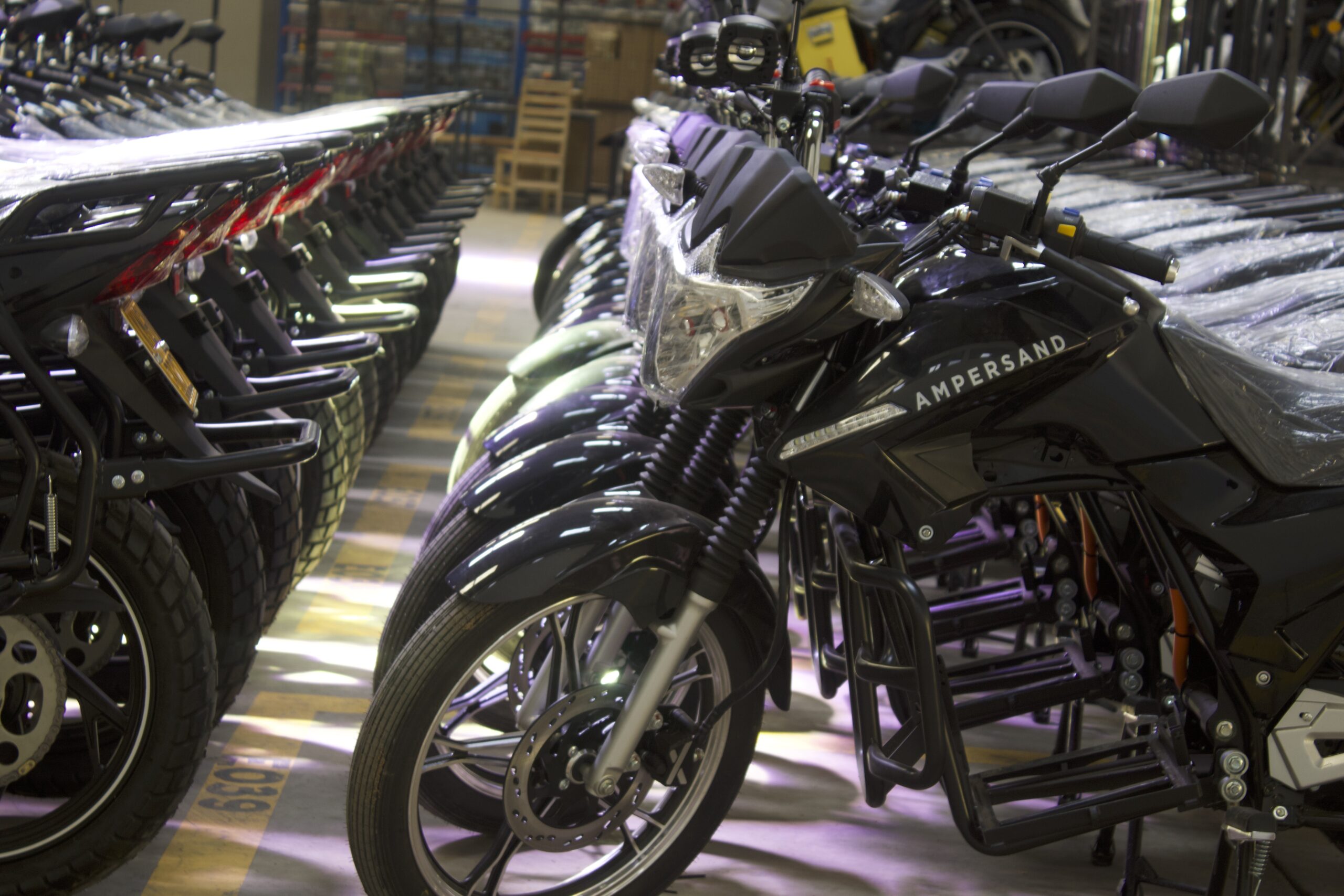Support CleanTechnica’s work through a Substack subscription or on Stripe.
Oshkosh Corporation has been building the vehicles that keep America running for over 100 years. They first popped onto our cleantech radar as part of the bidding process for the selection of the Next Generation Delivery Vehicle (NGDV) for the United States Postal Service (USPS). Oshkosh Corp famously won the competitive bidding process with their e-commerce friendly design and its controversial duck-billed hood.
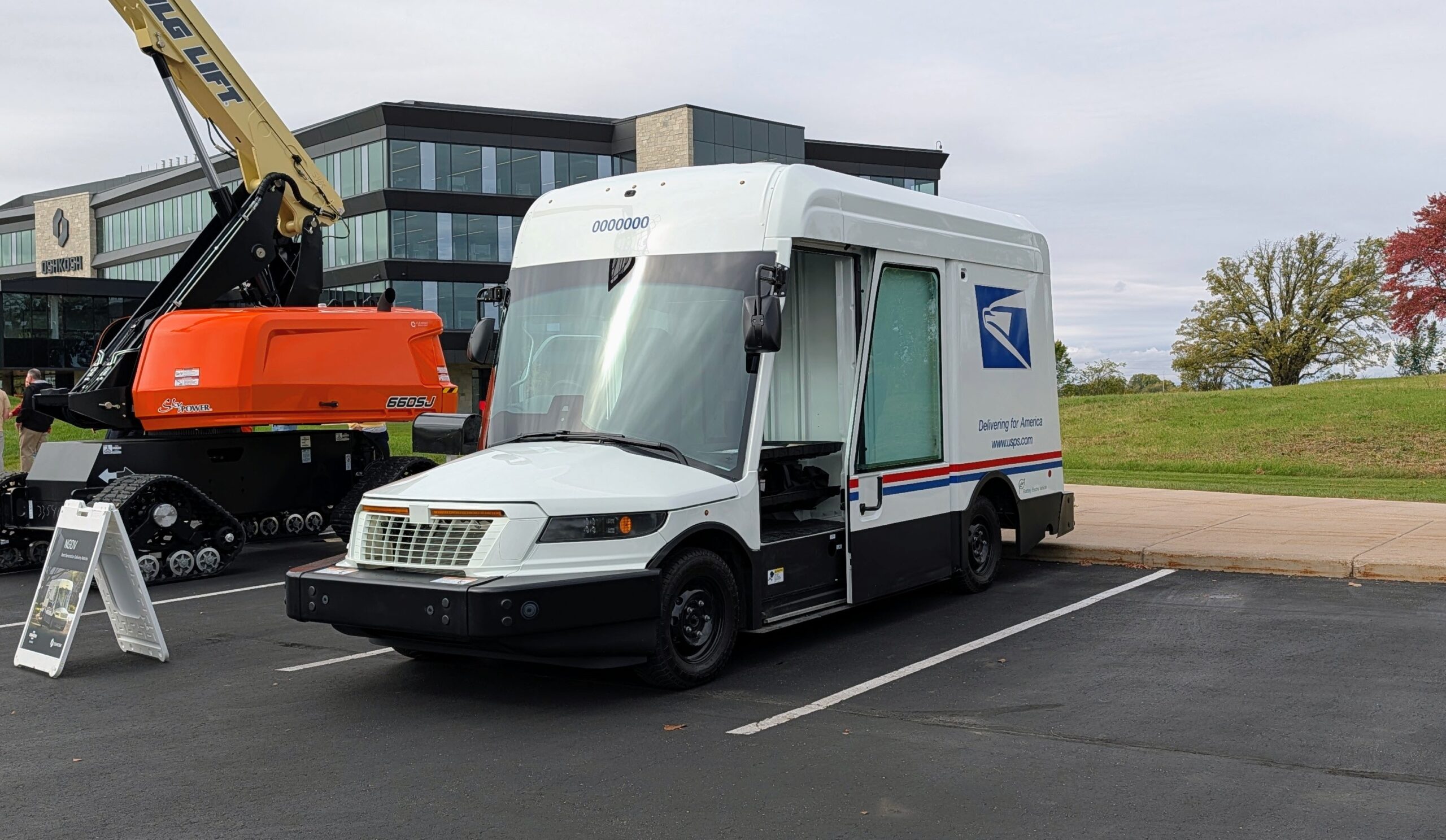
Like the NGDV, many of the vehicles Oshkosh Corp make are available in fully electric configurations. Oshkosh Corp invited CleanTechnica up to their headquarters in Oshkosh, Wisconsin, to take a look at — and drive — some of the electric vehicles they build right here in the United States.
Disclaimer: Oshkosh Corporation paid for the author’s travel and accommodations to attend this one-day, invite-only media event.
Oshkosh Corporation
The Oshkosh Corporation has been building a range of vehicles for companies across the country and around the world since 1917. These include vehicles like fire trucks, aircraft rescue vehicles, JLG lifts, front discharge cement trucks, the next-generation delivery vehicle for the USPS, refuse trucks, and the world famous heavy expanded mobility tactical truck, aka the HEMTT.
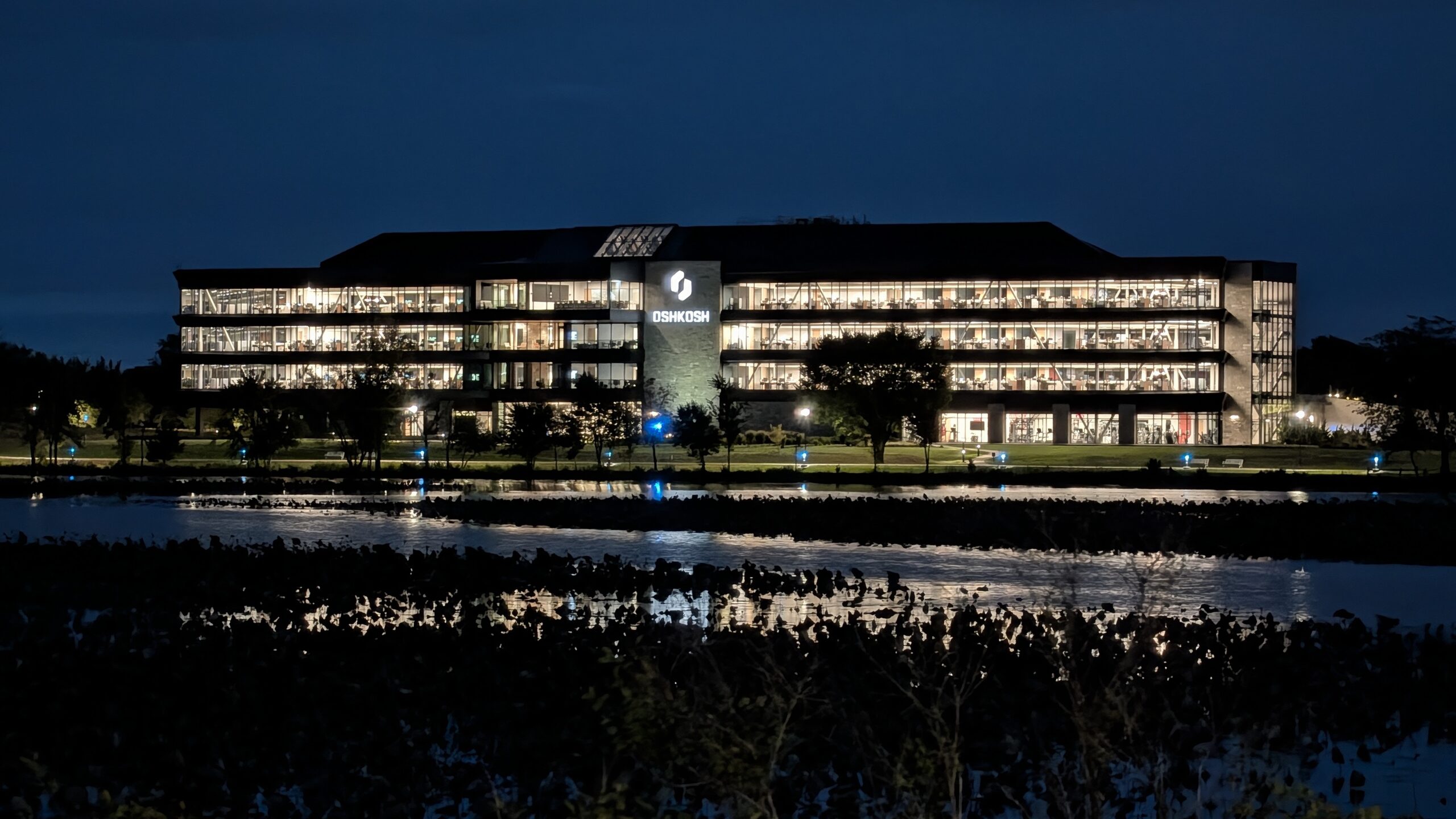
On the surface, you might expect a 100-year-old vehicle company building some of the most diesel-oriented vehicles on the planet to be stuck in their ways. Walking up to their beautiful new corporate headquarters in Oshkosh, Wisconsin, it was clear that you definitely shouldn’t judge a book by its cover.
Outside the headquarters, a military transport vehicle, a JLG Extension Boom lift, and a McNielus refuse truck showed off their versatility. Walking inside, we were greeted by a pair of autonomous vehicles kitted out with sensors.
Trash Cans from the Future
One of them autonomous vehicles was named HARR-E. It was designed to accept trash in compact spaces such as apartments, universities, and large corporate campuses. It’s kitted out with LIDAR, ultrasonic sensors, and cameras that let it see the world so it can navigate through the world autonomously, accepting trash along the way.
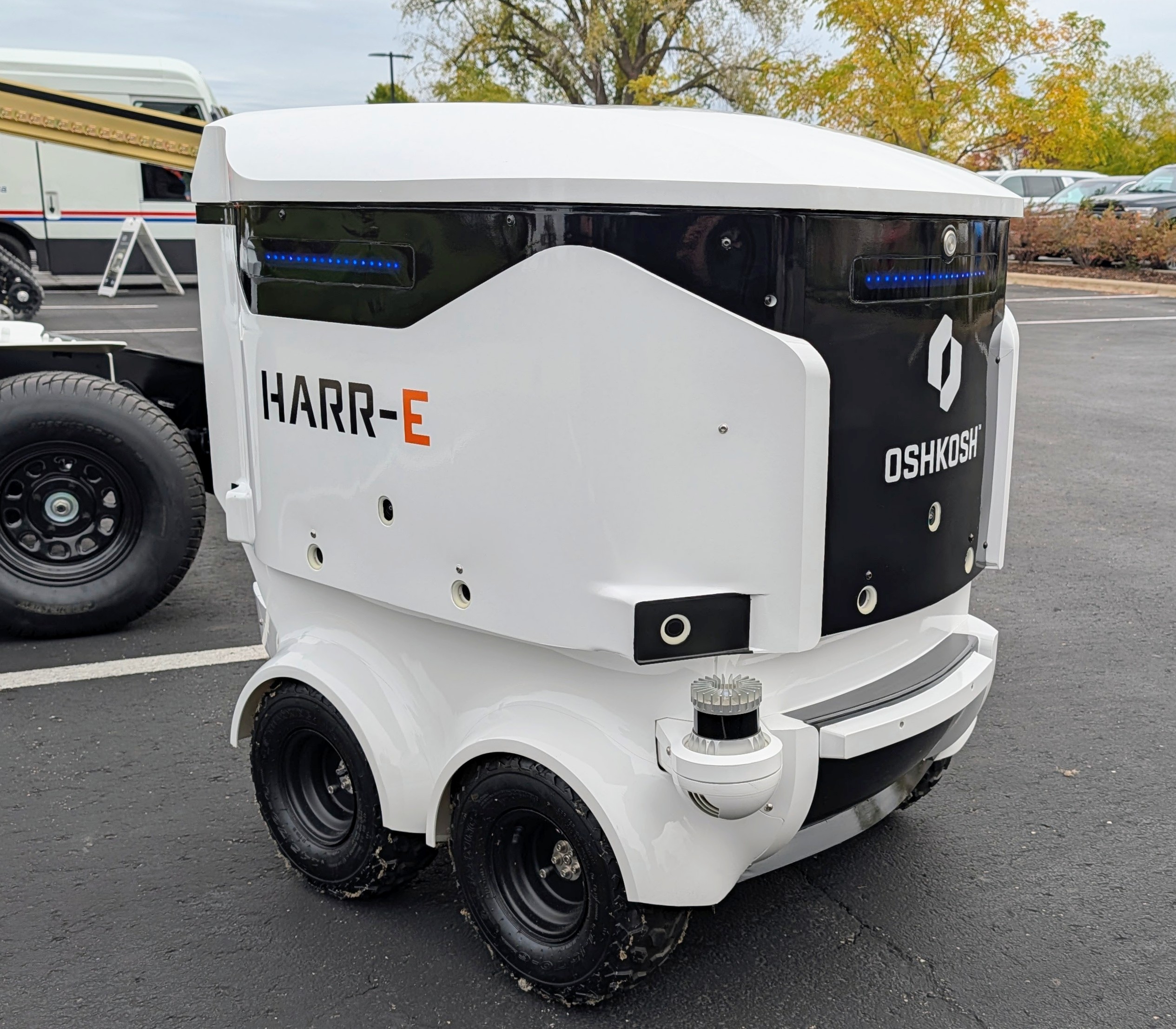
It’s the LIDAR-equipped fully autonomous trash can you never knew you needed. That’s right. I said LIDAR. On a trash can. It’s not just a publicity stunt, either. Oshkosh’s representatives told us that while it’s likely a niche solution, the maintenance teams running festivals, university campuses, apartment complexes, and the like were eager to get one after first seeing HARR-E at CES in January 2025.
Fully Electric, Autonomous Airport Operations
Oshkosh Corp has built the vehicles that keep airports around the world running for years. Under the Aerotech brand, they offer fully electric airport tow tractors in a few different configurations. They also build combustion versions if that’s more your speed.
Beyond the tow tractors, Oshkosh Corp makes a lot of the Ground Support Equipment (GSE) that keeps airport gates in operation, everything from the jetway itself to cargo handling equipment, airport operations equipment, and more. Passengers rarely think about it but there’s a literal army of people and equipment running around on the tarmac just to keep our flights running on time.
While they already offer electric tow tractors, most of the vehicles running around airports are perfect candidates for electrification. With their mastery of the complex orchestra at airport gates, Oshkosh Corp is building out a comprehensive solution for airport gate operations that they believe can make airport gates safer, more efficient, and more reliable.
Sitting right at the center of the chaos is the conductor called iOps. Oshkosh Corp’s iOps is the brain for gate operations that talks to the airline, workers, and equipment to maximize efficiency. They’re focused on streamlining individual pieces of the process at a time — with what they like to call “moments of autonomy.” Streamlining dangerous, repetitive, or high value tasks takes loads off of operators, making their job safer and more efficient, and derisking the process at the same time.
When a plane is brought into a gate and serviced, everything needs to happen in a specific order, and Oshkosh Corp is building the hardware and software solutions to make that happen. With their long history of building the ground support equipment that makes our airports as efficient as they are today, Oshkosh Corp is well positioned to build out the future, carrying it forward into the digital age.
The Next Generation Delivery Vehicle
The next generation delivery vehicle (NGDV) was the star of the show at Oshkosh and gained notoriety both for its goofy looks and it’s impressive functionality. It earned a leg up on the competition thanks to its ability to be kitted out with a zero-emission battery electric powertrain or a gas engine depending on customer preference. In person, the vehicle is much larger than it looks in photos, especially on the inside.
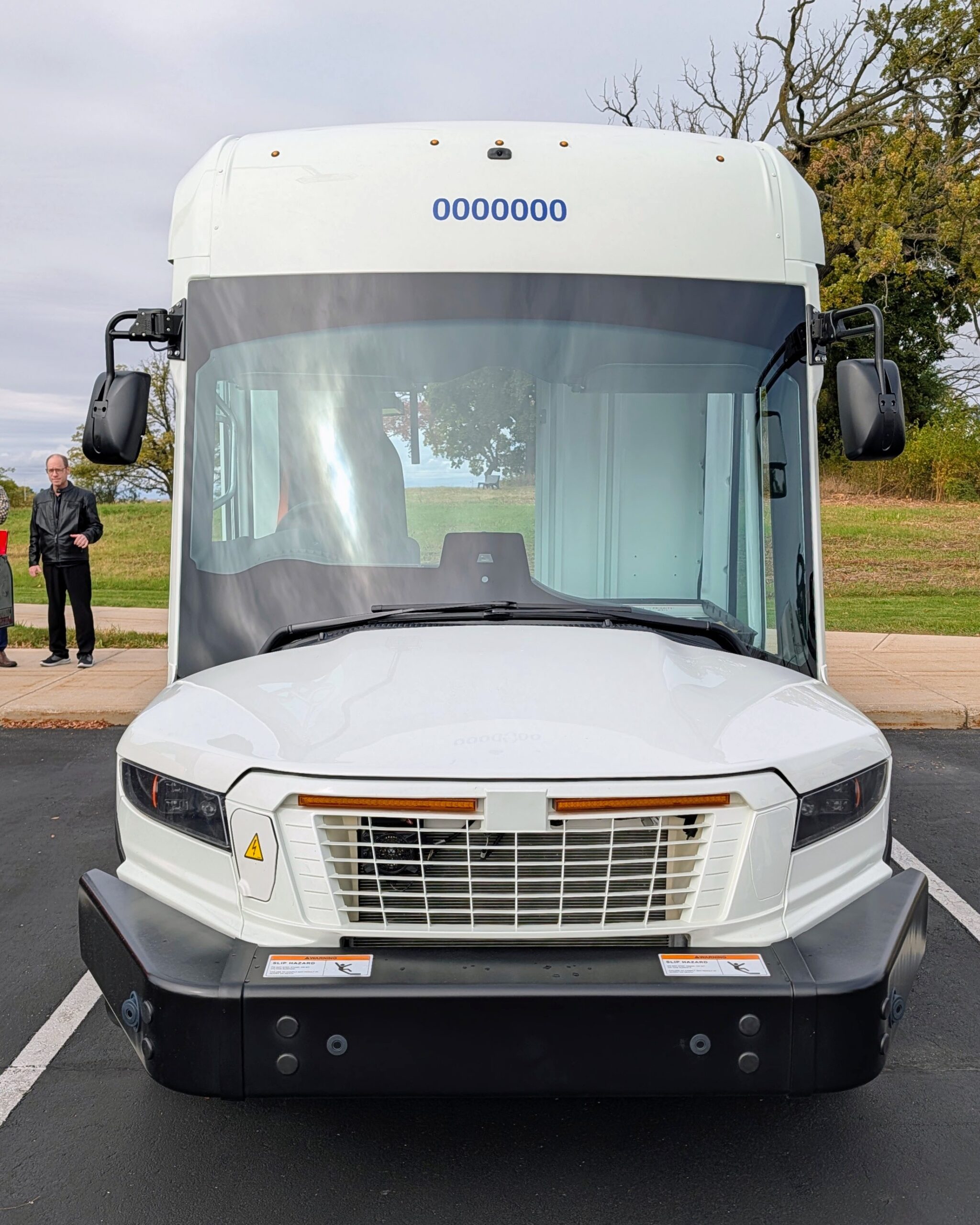
At 6’2″ tall, I’m able to stand at full height in the rear parcel storage area with room to spare. The rear of the vehicle comes kitted out with racks on either side to store the increasingly popular eCommerce parcels. These small boxes and packages continue to grow as a percentage of the overall packages delivered to US homes, making them a valuable potential revenue stream for the US Postal Service.
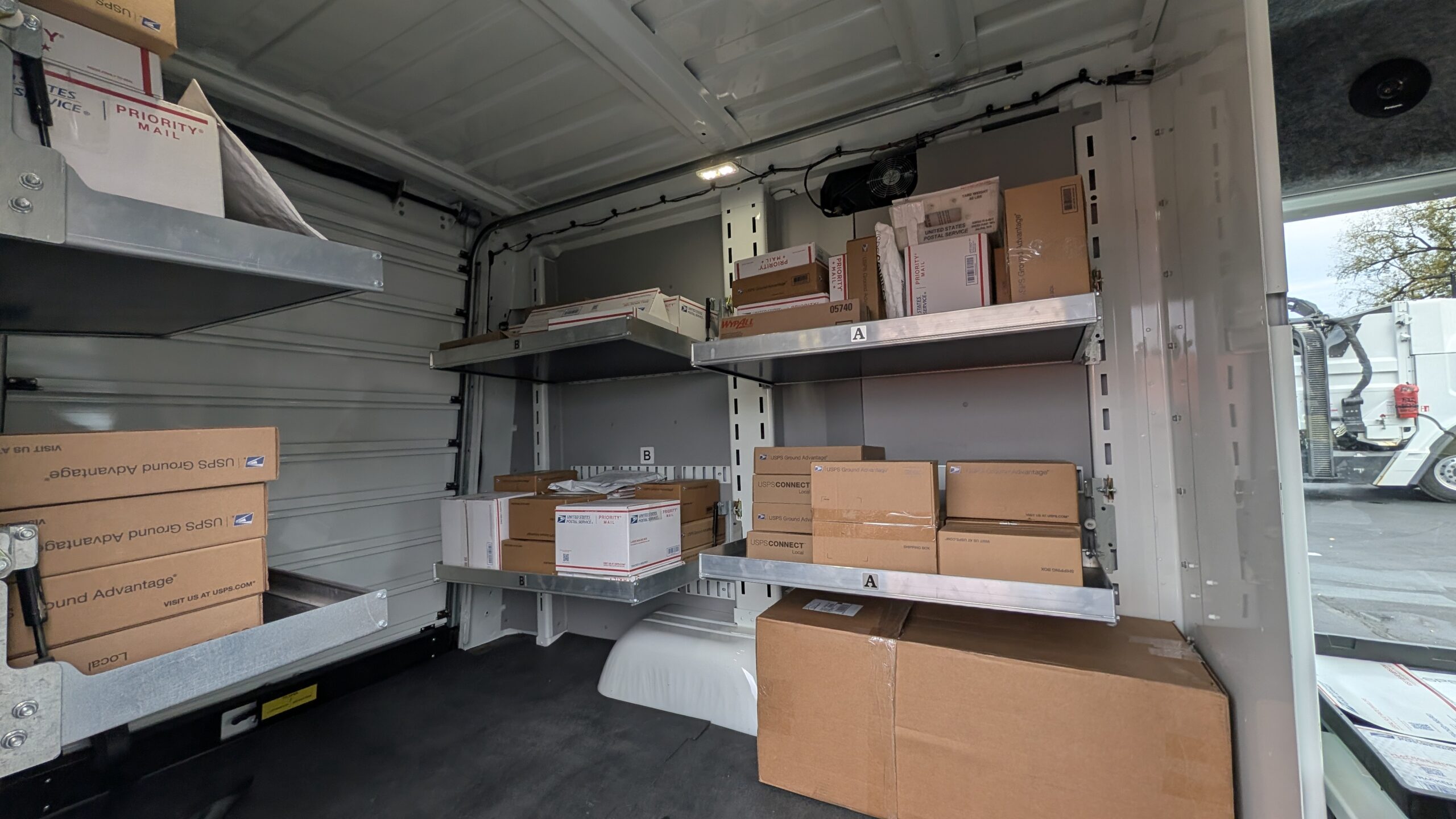
They let us drive one of the test mules they’ve been running around for a few years now, and while acceleration was limited by software, it still had plenty of pep to it. We ripped across the parking lot and were able to turn around in the equivalent of a dead end street in a single turn.
It’s an impressive vehicle that’s shaping up to be right around half of Oshkosh Corporation’s sales over the next few years.
Overall
Oshkosh Corporation is far more than just a company building the same old vehicles that your dad, your grandad, and maybe even his dad might have been driving around on the job. They do indeed carry their long legacy of building vehicles that make a difference in people’s lives, but they’re doing so with an eye to the future.
They are building the vehicles that keep America and many other countries around the world running, improving safety, efficiency, and reliability with each successive offering. It’s that drive for continuous improvement and mastery of vehicle engineering that has led them to increasingly integrate fully electric vehicles into their product offerings.
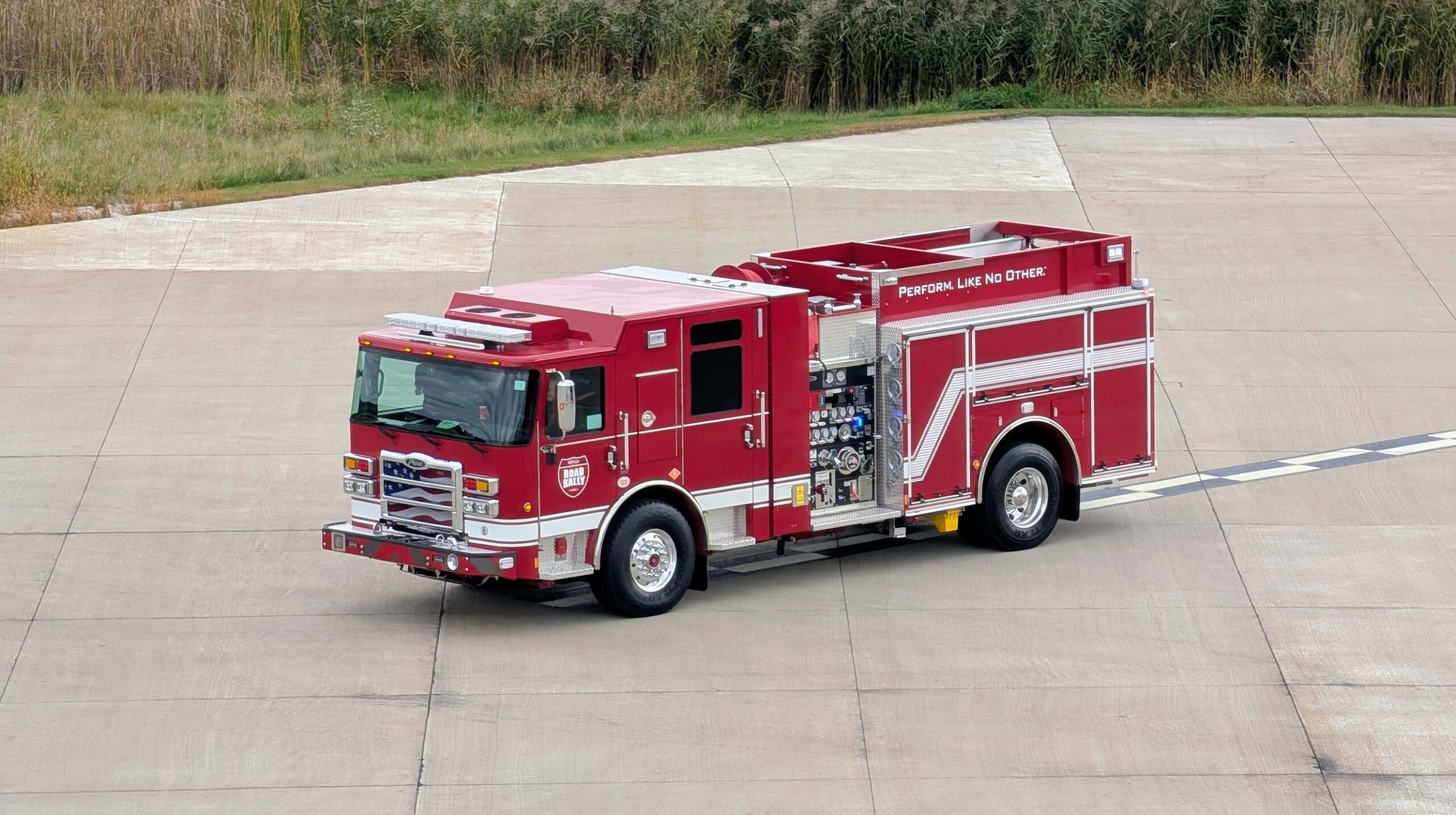
A lot of the vehicles that keep modern civilization running — like fire trucks, delivery vehicles, scissor lifts, cement trucks, and military vehicles of all shapes and sizes — don’t drive very many miles each day. But the miles they do drive are critical to keeping people alive, keeping infrastructure running, and keeping projects moving.
Oshkosh Corporation is always looking to drive operational efficiencies in the varied industries they serve, and it was a privilege to see firsthand how they are increasingly integrating fully electric vehicles and autonomous technology into them.
As William Gibson famously said, “the future is already here — it’s just not very evenly distributed,” and that’s thanks to companies like Oshkosh Corp. They employ 18,500 people around the world, and if my time behind the wheel of their vehicles — including the Next Generation Delivery Vehicle, their fully electric Pierce Volterra fire truck, and a Mcneilus electric refuse truck — is any indication, the future is indeed electric.
For more information about Oshkosh Corporation, head over to their website.
A few of the fully electric vehicles they offer:
Sign up for CleanTechnica’s Weekly Substack for Zach and Scott’s in-depth analyses and high level summaries, sign up for our daily newsletter, and follow us on Google News!
Have a tip for CleanTechnica? Want to advertise? Want to suggest a guest for our CleanTech Talk podcast? Contact us here.
Sign up for our daily newsletter for 15 new cleantech stories a day. Or sign up for our weekly one on top stories of the week if daily is too frequent.
CleanTechnica uses affiliate links. See our policy here.
CleanTechnica’s Comment Policy



